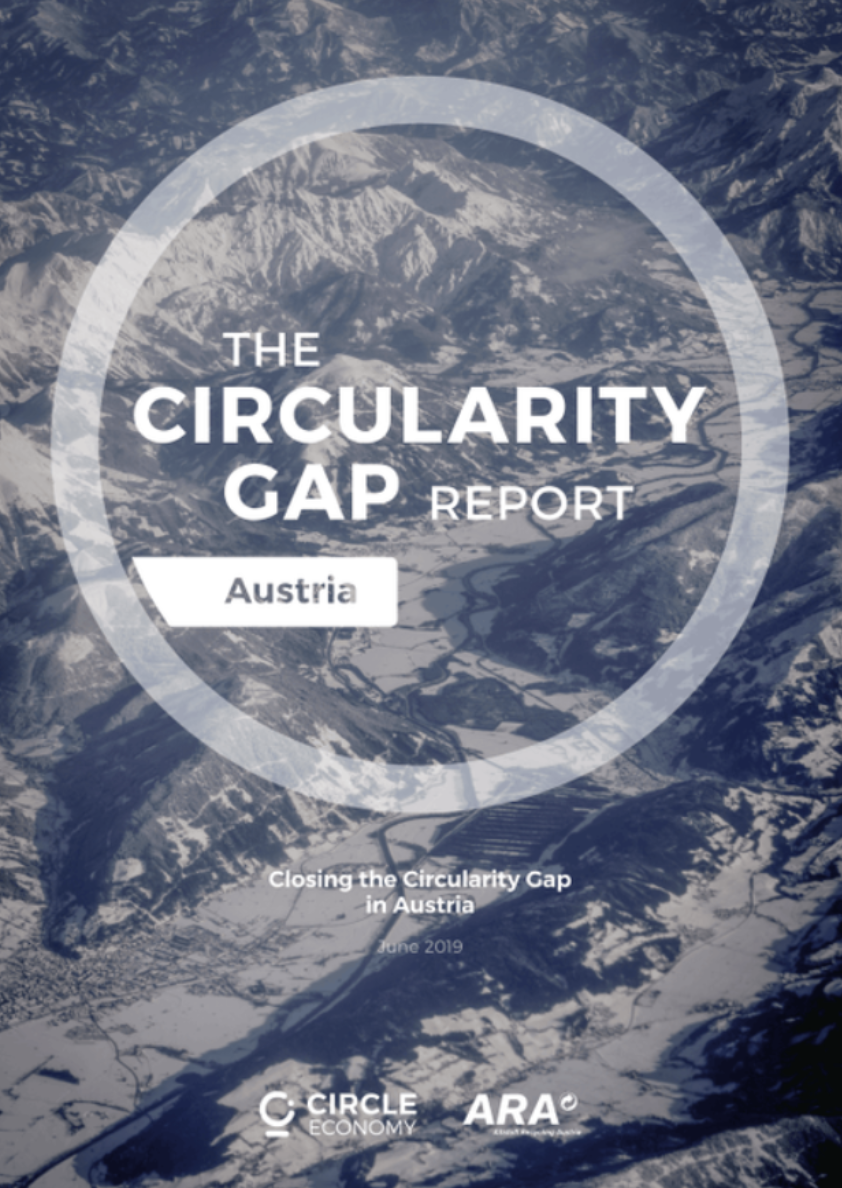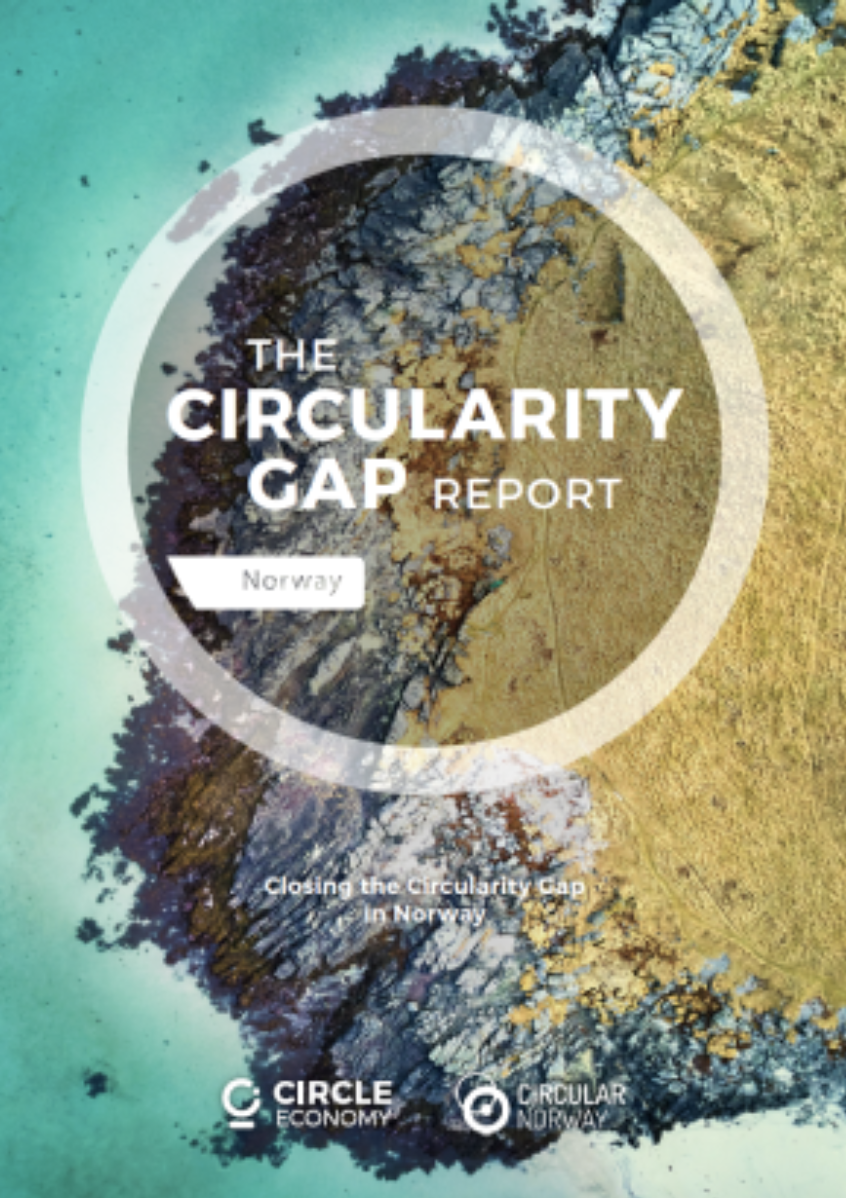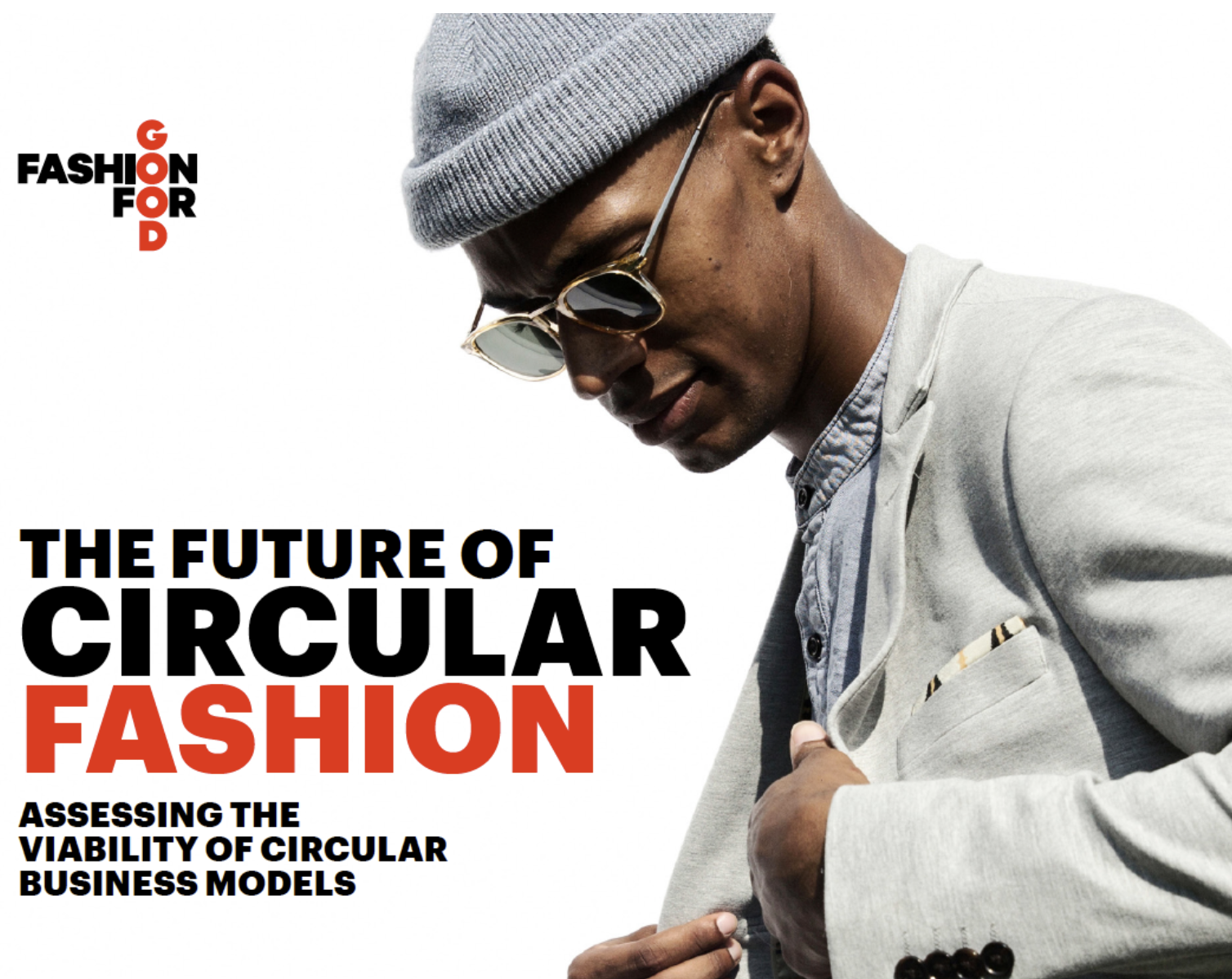Cirkulära Rapporter
Vill du att din cirkulära rapport ska finnas här eller saknar du någon relevant rapport?
Kontakta oss i så fall på info@cradlenet.se
Category
- december 2024
- juni 2024
- april 2024
- mars 2024
- november 2023
- oktober 2023
- augusti 2023
- mars 2023
- januari 2023
- oktober 2022
- september 2022
- april 2022
- februari 2022
- september 2021
- augusti 2021
- mars 2021
- februari 2021
- januari 2021
- september 2020
- december 2019
- september 2019
- maj 2019
- januari 2019
- maj 2018
- januari 2018
Resource efficiency and the circular economy in Europe 2019
Producerad av: European Environment Agency
Publicerad: 2020
“This report presents an updated and extended assessment of approaches and identifies trends, similarities and new directions taken by countries in the connected policy areas of resource efficiency and the circular economy. It is based on information provided in 2018 by 32 participating countries of the EEA/Eionet (European Environment Information and Observation Network) (Annex 2, Map A2.1). This report directly builds on the 2016 EEA report More from less — material resource efficiency in Europe by reflecting the changing policy agenda with respect to the circular economy.
Circular economy action plan
Producerad av: Europa kommissionen
Publicerad: 2020
“The new Action Plan announces initiatives along the entire life cycle of products, targeting for example their design, promoting circular economy processes, fostering sustainable consumption, and aiming to ensure that the resources used are kept in the EU economy for as long as possible.”
The Circularity Gap Report - Austria
Producerad av: Circle Economy
Publicerad: 2020
“The Circularity Gap Report Austria is the first in which the global methodology was applied to an individual country and provides the Austrian political and business arena with an evidence base to explore the path towards circularity. The report identifies which interventions may be best placed to improve circularity and provides suggested measures that could boost Austria's circularity rate from the current 9.7% to an estimated 37.4%
The Circularity Gap Report - the Netherlands
Producerad av: Circle Economy
Publicerad: 2020
“The Netherlands is a global frontrunner in the race to circularity with a Circularity Metric of 24.5%. However, the government has ambitious goals: an economy that is 50% circular by 2030 and 100% circular by 2050. The Circularity Gap Report, the Netherlands, recommends wide-ranging ways in which the economy can pivot away from its linear habits across four key sectors: agriculture, construction, manufacturing and energy. The suggested strategies could triple the Dutch metric from 24.5% to 70%.”
The Circularity Gap Report - Norway
Producerad av: Circle Economy
Publicerad: 2020
“At 2.4%, Norway's circularity rate is below global average (8.6%). 97.6% of materials consumed each year are never cycled back into the Norwegian economy.
With the climate emergency and the EU's decision to strive for full circularity looming over Norway, the need for a circular transition is urgent. Our report reveals that the country has the potential to increase its circularity up twenty times and become a pioneer in the circular economy. It dives into six scenarios that could contribute to the necessary changes towards a sustainable, circular economy.”
Sveriges strategi för Cirkulär ekonomi
Producerad av: Sveriges regering
Publicerad: 2020
“Denna nationella strategi pekar ut inriktningen för det arbete som behöver göras för att ställa om till cirkulär produktion, konsumtion och affärsmodeller, samt giftfria och cirkulära materialkretslopp. Visionen är ett samhälle där resurser används effektivt i giftfria cirkulära flöden och ersätter jungfruliga material. Handlingsplaner som beskriver styrmedel och åtgärder kommer senare att tas fram.”
Financing the circular economy
Producerad av: Ellen MacArthur Foundation
Publicerad: 2020
“The circular economy is a crucial part of the solution to climate change and other global challenges, while offering significant opportunities for new and better growth.
Our report, Financing the circular economy - Capturing the opportunity, brings new analysis that highlights the rapid growth in circular economy financing and investment across asset classes and sectors.It calls on financial services firms to build on the momentum by seizing the opportunities and scaling the circular economy, in collaboration with governments and corporates.”
Circular Europe, how to successfully manage the transition from a linear to a circular world.
Producerad av: The European House Ambrosetti, Enel och Enel Foundation
Publiserad: 2020
The study, “Circular Europe: How to successfully manage the transition from a linear to a circular world” focuses on the state-of-the-art of circular economy in European countries, while also providing a practical roadmap for the future.
Circular Metrics for Business
Producerad av: Circle Economy & PACE
Publicerad: oktober 2020
I takt med att den cirkulära ekonomin utvecklas ökar behovet av att kunna mäta. På senare tid har flera ramverk för att mäta cirkularitet sett dagens ljus, bland annat Circulytics från Ellen MacArthur Foundation och Circular Transition Indicators från WBCSD. Den här rapporten ger en överblick över de olika alternativen och ger vägledning i att hitta det som passar olika verksamheter bäst, vad man bör tänka på och hur informationen kan användas för att ställa om till en cirkulär affärsmodell.
Morgondagens cirkulära flöden
Producerad av: RE:Source
Publicerad: December 2019
En hållbar materialförsörjning är en av de stora samhällsutmaningar RE:Source adresserar. Uppdraget bakom denna förstudie och framtidsanalys är att tillhandahålla en överblick av Framtidens material & morgondagens återvinningssystem.
En Cirkulär ekonomi inom planetens gränser förutsätter att vi sätter mål som får ner samhällets totala resursförbrukning. Då behöver vi veta var hävstångspotentialerna finns, vilket hör till det som utforskas i denna rapport.
Completing the picture; how the circular economy tackles climate change
Producerad av: Ellen MacArthur Foundation och Material Economics
Publicerad: 2019
“Renewable energy is not enough. There needs to be a fundamental shift in the global approach to tackling climate change and the circular economy can play an essential role.
Whilst the circular economy is underpinned by renewable energy, the paper concentrates on five key areas (cement, plastics, steel, aluminium, and food) to illustrate how designing out waste, keeping materials in use, and regenerating farmland can reduce these emissions. [The report] demonstrates how business leaders, policymakers, and investors can build a thriving and resilient economy while playing an essential role in reaching climate targets.”
Återbruksbarometern 2019 del 1
Producerad av: Björk&Frihet
Publicerad: 2019
“Återbruksbarometern 2019 består av två delar, varav denna första syftar till att ge utökad en bild av secondhand-handelns klimatpåverkan samt jämföra detta med tidigare forskning kring kläders klimatpåverkan. Undersökningen är gjord genom att först visa den ideella secondhand-organisationen Björkåfrihets utsläpp av koldioxidekvivalenter (CO2e), och därefter jämföra detta utsläppen som nyproducerade plagg ger upphov till.
The Circularity Gap Report 2019
Producerad av: Circle Economy
Publicerad: 2019
“Our world is only 9% circular and the trend is negative. The circularity gap is not closing. In 12 months since the launch of the first Circularity Gap Report, the upward trend in resource extraction and greenhouse gas emissions has continued and key indicators confirm that the problems of a linear economy are 'baked in' to the global economy and we are heading in the wrong direction.
On 22 January 2019, Circle Economy launches the second annual Circularity Gap Report in Davos during the World Economic Forum Annual Meeting. In the report, Circle Economy positions the circular economy as a tool for the paradigm shift we so desperately need. It offers the prospect of a global economy which is regenerative and abundant.”
Outline of the Circular Economy
In many countries, governments are looking for ways to change their economy into one that is circular, or to improve the level of resource efficiency (e.g. see the EU programme ‘Closing the loop’ or the World Circular Economy Forum). To do so effectively, having an overview of the current state of circular activities in the economy is important. To date, such an overview has been lacking. This PBL report provides an outline of the current state of the circular economy in the Netherlands.
The Future of Circular Fashion
Producerad av: Fashion for Good och Accenture
“Fashion for Good, in collaboration with Accenture Strategy, today launch a new report, “The Future of Circular Fashion: Assessing the Viability of Circular Business Models“, that for the first time explores the financial viability of circular business models in the fashion industry. The study looks into three different models – rental, subscription-rental and recommerce, to assess the financial viability of each when adopted in four different market segments – value, mid-market, premium and luxury. With established brands and retailers being slow to adopt circular models, the report presents further incentives for implementation, helping to identify where circular models are attractive today and the critical levers to enhance their viability in future.”
Cities and Circular Economy for Food
Producerad av: the Ellen MacArthur Foundation
Publicerad: 2019
“By making great strides in productivity, the industrial food system has managed largely to meet the demands of a growing global population. However, this approach to food production, and the management of food by-products, is endangering biodiversity and human health. It has become clear that this food system is no longer fit for the 21st century and that a new model is required.
Launched at the World Economic Forum Annual Meeting 2019 in Davos, Cities and Circular Economy for Food explores the benefits of the transition to a regenerative food system. With analytical support from SYSTEMIQ, the research outlines a vision underpinned by circular economy principles, where food production improves rather than degrades the environment.
Endast en tredjedel av svenska storbolag arbetar med cirkulär ekonomi
Regeringen har beslutat att Sverige behöver ställa om från en linjär, fossilbaserad ekonomi till en cirkulär och biobaserad ekonomi för att vi ska leva upp till de internationella klimatmålen samt målen i Agenda 2030. Men en ny marknadsundersökning genomförd av nätverket Cradlenet, IVL Svenska Miljöinstitutet, Cerise, Ragn-Sells och Nordea visar att endast en tredjedel av Sveriges största börsbolag arbetar med cirkulär ekonomi idag.
Framtider bortom BNP-tillväxt
Fyra scenarier för Sverige 2050 har tagits fram som illustrerar de olika inriktningar som samhället skulle kunna ta för att nå de uppsatta hållbarhetsmålen. Scenarierna målar upp bilder av framtida samhällen som inte behöver bygga på nuvarande ekonomisk logik och är istället utformade utifrån fyra olika alternativa strategier: Kollaborativ ekonomi, Lokal självförsörjning, Automatisering för livskvalitet och Cirkulär ekonomi i välfärdsstaten.


















